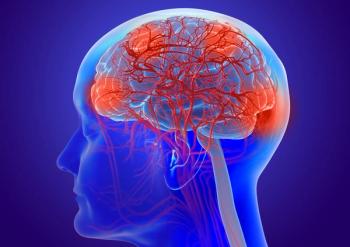
Obesity Linked to Increased Risk of Meningioma
A new meta-analysis found that adiposity is linked to an increased risk of meningioma, but is unrelated to glioma risk; and physical activity is linked to a lower risk for meningioma.
A new meta-analysis found that adiposity is linked to an increased risk of meningioma, but is unrelated to glioma risk. Meanwhile, physical activity is linked to a lower risk for meningioma, and was only slightly related to glioma risk.
Meningiomas and gliomas represent the most common types of brain tumor in adults, and the prognosis is modest for the former (5-year survival rate of 63%) and poor for the latter (5-year survival of 4%). “Such unfavorable prognosis makes it more relevant to examine possible prevention strategies,” wrote study authors led by Tobias Niedermaier, MPH, of the University of Regensburg in Germany. There was previously only limited information regarding adiposity and physical activity and how they related to risk of these brain tumors.
The new meta-analysis included 12 eligible studies of body mass index (BMI) and 6 studies on physical activity. In total, the analysis included 2,982 cases of meningioma, and 3,057 cases of glioma; results were
In comparison to normal weight individuals, those who were overweight (BMI of 25–29.9) had a relative risk (RR) for meningioma of 1.21 (95% confidence interval [CI], 1.01–1.43). Obese (BMI of 30 and above) individuals had a higher risk, with an RR of 1.54 (95% CI, 1.32–1.79).
Neither category of BMI, however, were significantly associated with glioma risk. Overweight individuals had an RR for glioma of 1.06 (95% CI, 0.94–1.20), and obese individuals had an RR of 1.11 (0.98-1.27).
The results for physical activity were similar. Those in the highest category of physical activity had an inverse relation to meningioma compared to the lowest activity levels, with an RR of 0.73 (95% CI, 0.61–0.88). For glioma, the difference was smaller, with an RR of 0.86 (95% CI, 0.76-0.97).
These relationships persisted when the analysis included only prospective studies, with the exception of the connection between physical activity and glioma, which was rendered non-significant, with an RR of 0.91 (95% CI, 0.77-1.07).
“Given the paucity of known risk factors for meningioma and the high prevalence of adiposity and physical inactivity worldwide, these findings may be relevant for individual-level and public health strategies directed at reducing the risk of meningioma,” the authors concluded.
Newsletter
Stay up to date on recent advances in the multidisciplinary approach to cancer.


















































































